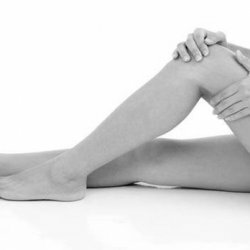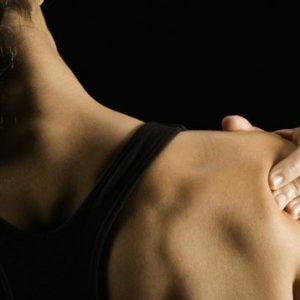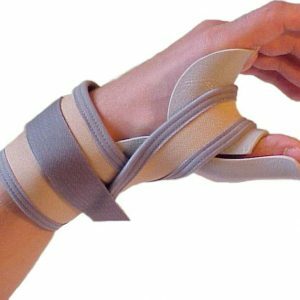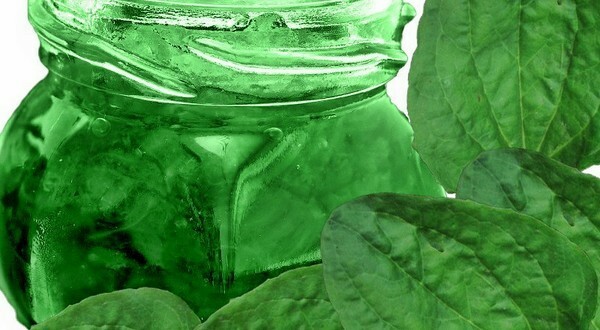Causes of pain in the knee
 Pain in the knee can occur suddenly and deliver a lot of unpleasant sensations. As a rule, the pain arises abruptly. The reasons for the appearance of pain in the knees are many. About the most common reasons we will tell in this article.
Pain in the knee can occur suddenly and deliver a lot of unpleasant sensations. As a rule, the pain arises abruptly. The reasons for the appearance of pain in the knees are many. About the most common reasons we will tell in this article.
Osteoarthritis of the knee joint - gonarthrosis
Arthrosis of the knee joint in medicine is also called gonarthrosis. This disease is very common. As a rule, it affects people over forty. Gonarthrosis can affect both one knee joint and both.
The disease develops slowly, for several years. Initially, pain in the knee appears rarely and they are weakly expressed. Most often they make themselves felt after a long walk. After a while, the pain becomes stronger, and it arises even when walking for insignificant distances. The most severe pain occurs when the person tries to get up from the crook or from the chair, as well as when climbing or descending the stairs. At rest, the knee does not hurt and at night the pain is poorly expressed. In rare cases, pain intensifies at night, but only when a person has walked a lot.
If the disease is not treated, then there are other symptoms: crunch in the knee, joint deformation and the like. Over the years, the symptoms only worsen. Therefore, this disease requires compulsory treatment.
Meniscus damage - meniscopathy
Meniscopathy is also a very common disease that occurs in 30% of people who complain of pain in the knee. Meniscal lesions can happen in every person, regardless of age. Women and men suffer from this disease equally often. Most often, only one knee joint is damaged.
Meniscus damage occurs as a result of an injury. Trauma can be minor and a person very often does not pay attention to it. However, after a while the disease makes itself felt. It manifests itself unexpectedly and quickly. Most often a person feels pain after running, unsuccessful movement when walking, skiing, during a jump and the like. At the time of injury, a person can hear a crunch in the knee, after which there is a sharp pain in the joint, which prevents further movement. In fifteen minutes, the pain may become weaker. But after a few days it becomes stronger again, with the knee swelling. Often, if a meniscus is damaged, a person feels tingling in the knee when walking.
The aggravation of the disease lasts about three weeks, after which the patient becomes better. But without treatment, pain sensations will appear from time to time, especially at the time of exercise.
Arthritis - inflammation of the joints
Every person can become arthritis. However, most often young people turn to doctors. When arthritis can immediately inflame two knee joints, which gives the patient a lot of inconvenience. There are several varieties of arthritis: rheumatoid arthritis, psoriatic, reactive, articular rheumatism, gout, Bekhterev's disease.
The disease has a pronounced feature - inflammation of the joints begins very quickly( one to three days), with the knee swelling and swelling, and the pain in the inflamed joint increases at night. Sometimes pain at night in a state of rest is much stronger than when walking.
Unfortunately, getting rid of the pain caused by arthritis is not so simple. After all, these pains do not depend on the uncomfortable or comfortable position of the affected joint. They may not respond to cold or heat. Slightly reduce them can only be through the use of anti-inflammatory drugs. Very often, any arthritis leads to inflammation of not one joint, but several: elbow, ankle, heel, joints of the fingers or toes.
Osteoarthritis of the hip joint - coxarthrosis
This disease is rare - only 3% of people who complain of pain in the knee. This disease has a similar symptomatology with gonarthrosis, so sometimes doctors confuse them. Pain with arthrosis of the hip joint is given from the hip joint to the knee.
Doctors diagnose this disease in this way: with coxarthrosis, the knee easily flexes and flexes, while the mobility of the knee does not decrease. But a person with this disease will find it very difficult to divorce his legs or turn his leg "from the hip".With gonarthrosis, the patient can easily do this, but it will be difficult to bend the knee or squat, as there will be a sharp pain.
Pain caused by blood circulation disorder
Vascular pain in the knee occurs in about 10% of people who go to the hospital with complaints of pain in the knee. The cause of these pains is worsening of the circulation of the knee joints. This disease is often found in adolescence, as well as during a period of active growth. It is due to the fact that the development of blood vessels does not keep pace with the accelerated growth of bones.
As a rule, if this disease appears once, then it accompanies a person for the rest of his life. But the intensity of pain is often reduced after twenty years. With arthrosis, usually with age, pain sensations only increase. Unlike arthrosis pain, pain caused by impaired blood circulation in the knees, is not accompanied by a decrease in mobility of the knee joints.
Pain sensations in this disease are symmetrical, that is, they are equally expressed in the left and right knee. Such pains intensify on the weather, with a cold, after hypothermia or physical exertion. At such times, patients complain that they have "knees".As a rule, vascular pains are eliminated by massage, the use of vasodilator drugs, rubbing warming ointments or self-massage( rapid kneading of the knees).Doctors in this condition do not prescribe a special therapy.
Inflammation of the knee tendons - periarthritis of the "goose paw" bag
Inflammation of the knee tendons is common. As a rule, this disease affects women over the age of forty. Pain can appear when walking on the stairs, with physical exertion, when carrying heavy bags and other weights. When walking on an even surface, the pain appears very rarely.
In inflammation of the knee, the pain extends not to the entire knee, but focuses only on the inner surface of the knees, about four centimeters below the point at which the knees touch the legs. In contrast to the above diseases, with knee tendon inflammation, the leg in the knee flexes and bends well, the knee does not deform, does not swell and does not change its shape.
As you can see, there are many diseases that can lead to pain in the knee. Some of them are very dangerous and without timely treatment can lead to negative consequences. Therefore, it is very important, with the slightest pain in the knee, to see a doctor so that he examines you, ascertains the cause of the pain and prescribes the correct treatment. The sooner you start treatment, the more successful it will be. Sometimes it is enough to use ointments and pharmacological drugs. Sometimes doctors can prescribe special physiotherapy procedures: warm-ups and the like.



